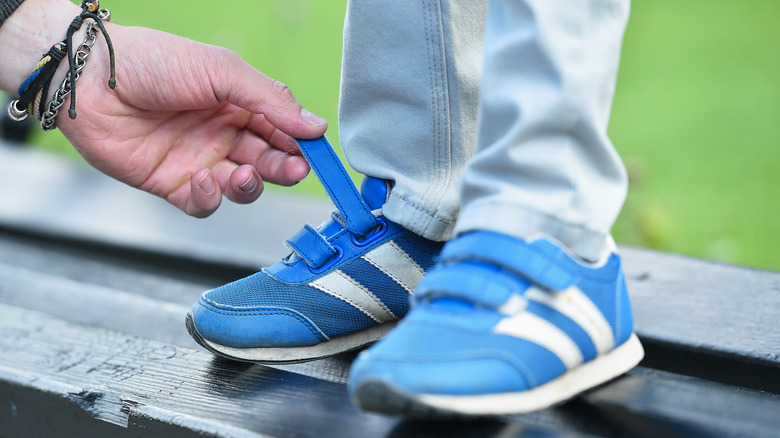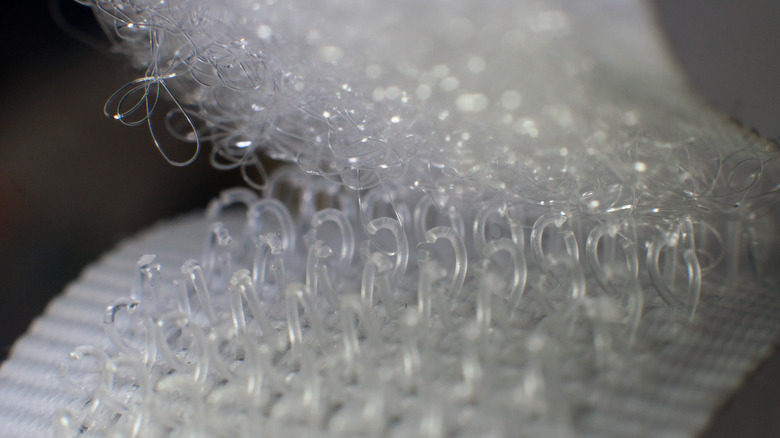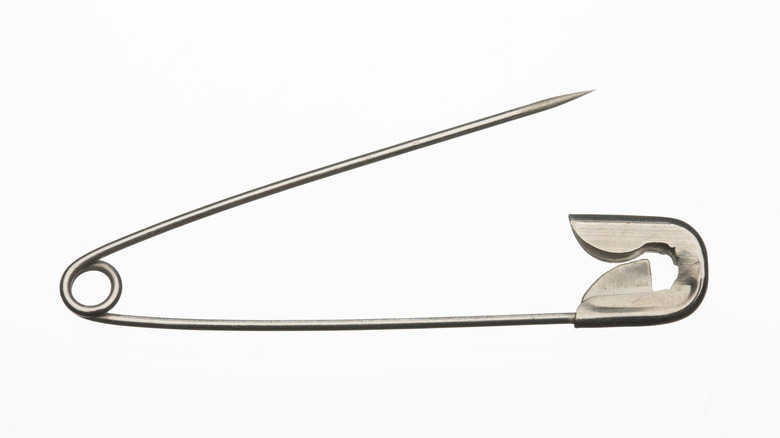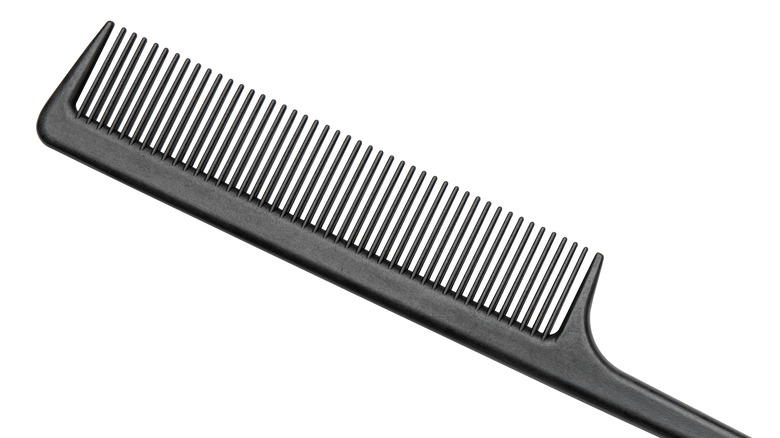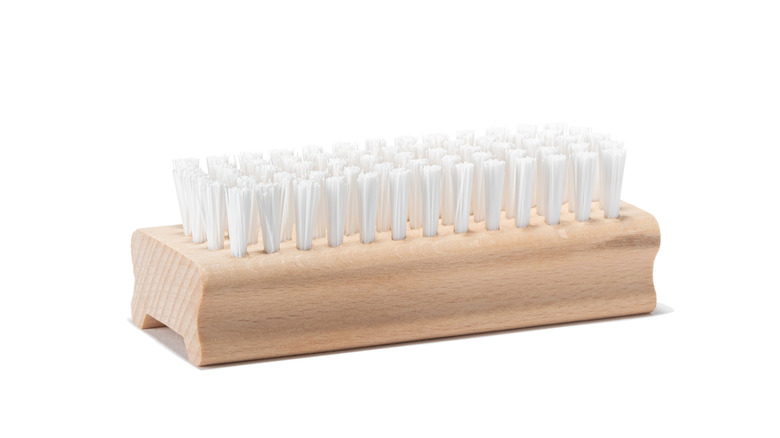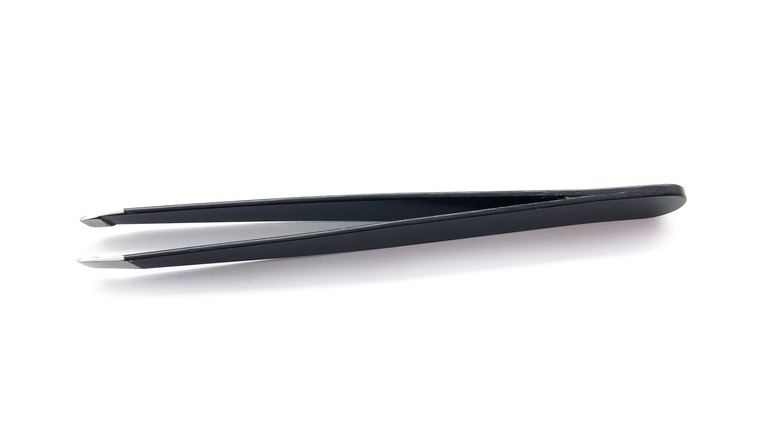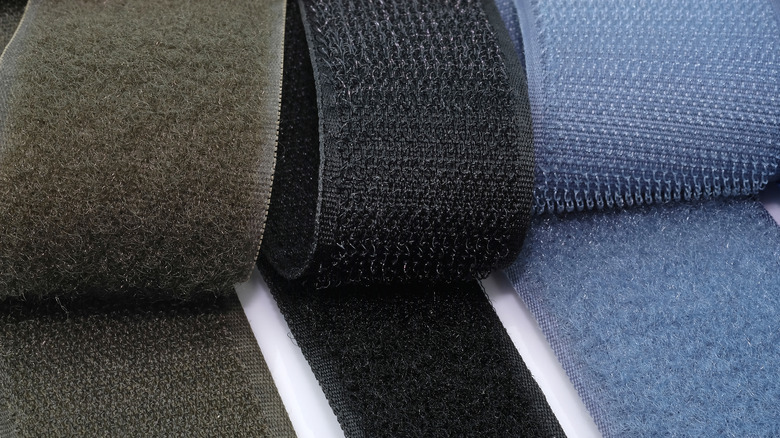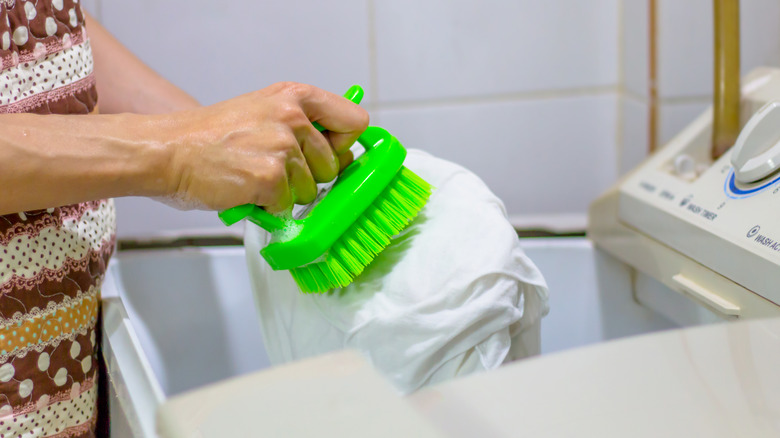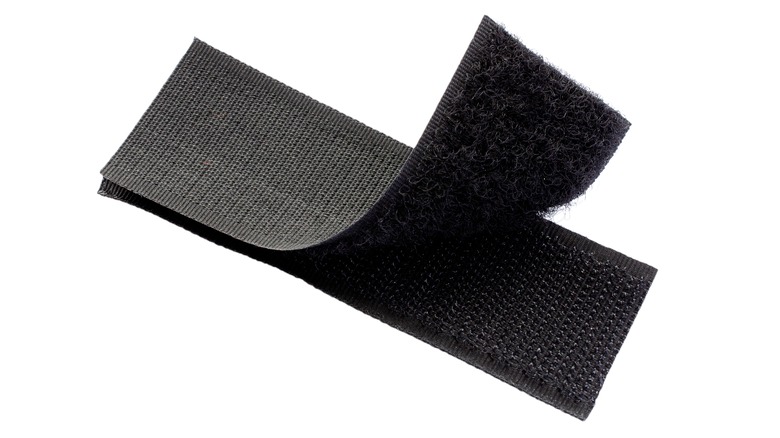Cleaning Velcro Is Easier Than You Think
Especially in a family setting, Velcro can have a major role when it comes to the fastening of clothing and other important items. It gives children the ability to start learning independence, for example, allowing them to easily fasten their own shoes or opening and closing their own bag. Velcro can also help parents with tasks like diaper changes, which provide an easy way to secure a diaper onto a child. It can also simply acts as a fun sensory toy to play with.
Velcro started as a design that was based on burdock seeds, which have tiny hooks that allow them to connect to soft surfaces, like animal fur or human clothing. How It Works explains that just like the burdock seed, one side of Velcro consists of tiny hooks that flawlessly connects to the other side of the Velcro, which have loops the hooks can connect to. The more hooks and loops that are placed on a unit of fabric, the stronger the hold will be. Additionally, the hooked side of the Velcro can be identified as the rough and scratchy side, while the loops are much softer.
The Spruce mentions that although there is no specific rule covering exactly how often Velcro should be cleaned, when it become solid, refuses to stick, or starts losing its fastening ability, you should consider cleaning them. Doing so can immensely help Velcro's fastening ability and allow the materials to last and stay effective much longer.
1. Clean the loops with a lint roller and tape
As mentioned before, Velcro consists of two opposing sides: one with hooks and the other with loops the hooks are meant to attach to. While the hooks are more complicated to clean, you can start by easily ridding the loops of small debris before moving on to the other side of the Velcro. Because the hooks are the main part of the Velcro that allows the material to act as a fastener, the loops tend to not collect as much debris, making them much easier to maintain and clean. The use of force while cleaning this side of the Velcro, however, must be done carefully because the loops tend to be rather fragile. If the loops are broken, the hooks will no longer be able to connect and fasten the material.
Home Viable suggests using the easy method of cleaning the looped side of your Velcro with a lint roller by gently rolling it back and forth on the soft side. Other sticky surfaces, like tape, can also be used for this task. Simply wrap your hand in the tape with the stick side facing outward, then roll back and forth on the Velcro surface just as you would with a lint roller. If the surface of the Velcro becomes frizzy, this could indicate the loops of your Velcro are breaking. In that case, roll more slowly and don't press as hard with your sticky surface.
2. Try a simple pin
When it comes to the rough, hooked portion of the Velcro, using a pin can be a simple and safe way to remove debris without damaging the hooks. Reselling Revealed states that this technique can work with any type of small, pointy object, such as a t-pin, safety pin, or even a toothpick. When picking a pointy object, however, ensure the object is sturdy and will not break or bend throughout this cleaning process.
When you look at the rough, hooked side of your Velcro, you will notice neat rows of hooks. Use your pointed object and run it in between one of these rows. Ensure your pointed object goes underneath the debris that has built-up on your Velcro. From there, pull the object straight up and out of the Velcro, removing the built-up debris along with it. Continue this technique row by row until your Velcro is clean. If you Velcro looks dusty or overall untidy after this process, use a toothbrush and some soapy water to give it a good scrub.
3. Use a comb and lint roller
A small bristle comb can also work as a great tool when needing to rid your Velcro of foreign debris. When using this technique, however, be careful of harsh stroke to avoid damaging the hooks of the Velcro. Before using the comb start by going over the area with a lint roller to catch foreign elements that may have already been loose. Then take your small, bristled comb and brush through the area with small forward and upward strokes. This loosens the debris from the hooks, allowing the lint roller to easily pick it up. Continue with the comb and use the lint brush to pick-up loose debris every so often. Some debris might also come off with the bristles of the comb. In that case, clear the bristles as they collect the debris. Simply continue this process until Velcro is clean, per United States of Build.
This technique is best used when stringy materials, such as string, hair, or lint is stuck to your Velcro. This easily occurs when the Velcro goes through wash, or if you have a pet that often sheds, like a cat or dog. Instead of a comb, pet brushes also work great with this technique (via Sparkling Penny).
4. Clean with vacuum and nail brush
If the piece of Velcro you need to clean is somewhat larger, you may want to consider a different, more area efficient way to clean it. Using a vacuum cleaner, you can start by running over the Velcro with the hose detachment to remove as much loose debris as possible. After vacuuming, scrub the Velcro with a nail brush. When doing so, hold the brush with the bristles pointing as a 90-degree angle and from there, push down into the hooks of the Velcro. Never scrub too hard with the nail brush because you could harm and hooks and further push debris into them. As debris comes loose, you can continue going back over the Velcro with the vacuum to clean as you scrub. How To Clean Stuff.net mentions that stubborn debris can also be loosened with dish soap, making it easier for the nail brush to pick-up and remove it.
Sparkling Penny thinks that a nail brush is a more comfortable and efficient tool to use when cleaning a larger piece of Velcro because it can cover more surface area and has a comfortable hand to use throughout its use. A toothbrush is another great, yet similar tool you can also try for this technique.
5. Try tweezers
Using tweezers alone for a big cleaning task may not be the most efficient technique for your Velcro, but combined with other techniques, it can be a simple removal technique for stubborn pieces of debris stuck in it. Sparkling Penny mentions that after a Velcro item goes through the wash, it can sometimes come out with a piece or two of lint stuck in the hooks. In this case, you can quickly and easily pluck the debris from the hooks, discontinuing the build-up of unwanted foreign materials on your Velcro. Done consistently, this technique can keep your Velcro clean, functional, and always looking its very best.
On a larger scale, this method may be more tedious and longer than the other Velcro cleaning processes, but it poses the least risk of damage to the hooks of your Velcro. Other techniques have the potential to bend and damage the hooks of the Velcro, causing them to lose their functionality. Tweezing out individual pieces of debris, however, does not pose the risk damage to your Velcro.
6. Using Velcro to clean Velcro
As odd as it may sound, you can use Velcro to remove debris on another piece of Velcro. Before doing this, you must have two separate pieces of Velcro, and both pieces must be the hooked side, the scratchy side. While one piece of Velcro needs to be cleaned, the other piece being used as the cleaner needs to be clean and completely free of debris, according to Velcro.
To clean, simply place both hooked sides of the Velcro facing each other and rub them together. The clean piece of Velcro should begin to gather the debris from the unkempt piece. Unfortunately, this technique only transfers the debris from one piece of Velcro to another. The Spruce recommends using this technique when you are in a hurry because it can quickly remove debris from Velcro you are needing to use right away. Then later, when you have more time available, you can thoroughly clean the other piece of Velcro with one of the other techniques mentioned above.
7. Removing stains from velcro
Similar to clothing and other pieces of fabric, Velcro also has the ability to stain. If you do just that, always start by using one of the methods above to remove foreign materials and debris before attempting to remove the stain. Then, for fabric and materials that can be washed, The Spruce recommends dabbing the stained Velcro with laundry detergent or any other type of enzyme-based stain remover. Scrub the solution into the stained surface with a small brush or with your finger, then let it sit for at least 10 minutes before washing. For white materials, you can also soak them in a solution of oxygen-based bleach and warm water for eight hours before washing it. The fabric nor the Velcro fasteners will be harmed throughout this process. Always close the Velcro fasteners before washing, and always wash the material according to the manufacturing label.
For items that cannot be washed, mix a solution of warm water and a few drops of laundry detergent. Then, with a stiff bristled brush, carefully scrub the solution on the Velcro. Be careful not to oversaturate the area during this process. Always have a dry microfiber clothe ready to catch stray drips. Rinse with a damp microfiber cloth and let the area air dry before putting it back into use.
8. How to keep velcro from soiling
Velcro is great thing to have in your home, making life simpler, especially in families with young children. Unfortunately, Velcro has the potential to collect a lot of debris very quickly. Although the collecting of debris on a Velcro surface is not harmful, it highly affects the functionality of the material. To avoid the often need to clean your pieces of Velcro, there are precautions and actions that can be taken to prevent and eliminate the build-up of foreign material and debris on your Velcro fasteners.
Velcro suggests to always have your Velcro fastened when it is not in use. An open piece of Velcro, especially the hooked side, is a magnet for foreign materials like hair and lint; therefore, keep it fastened to avoid anything from collecting onto its surface. When the item on which the Velcro is situated needs to be washed, fasten the straps before washing the material. The laundry is a breeding house for lint and other fuzzy pieces of debris, which are also easily attracted to the hooked side of a piece of Velcro.
Keeping the Velcro fastened simply prevents debris from collecting on it. If lint or other type of debris happen to find their way onto your Velcro, brush and pluck it out regularly to prevent build-up and keeping your fasteners always working effectively.
